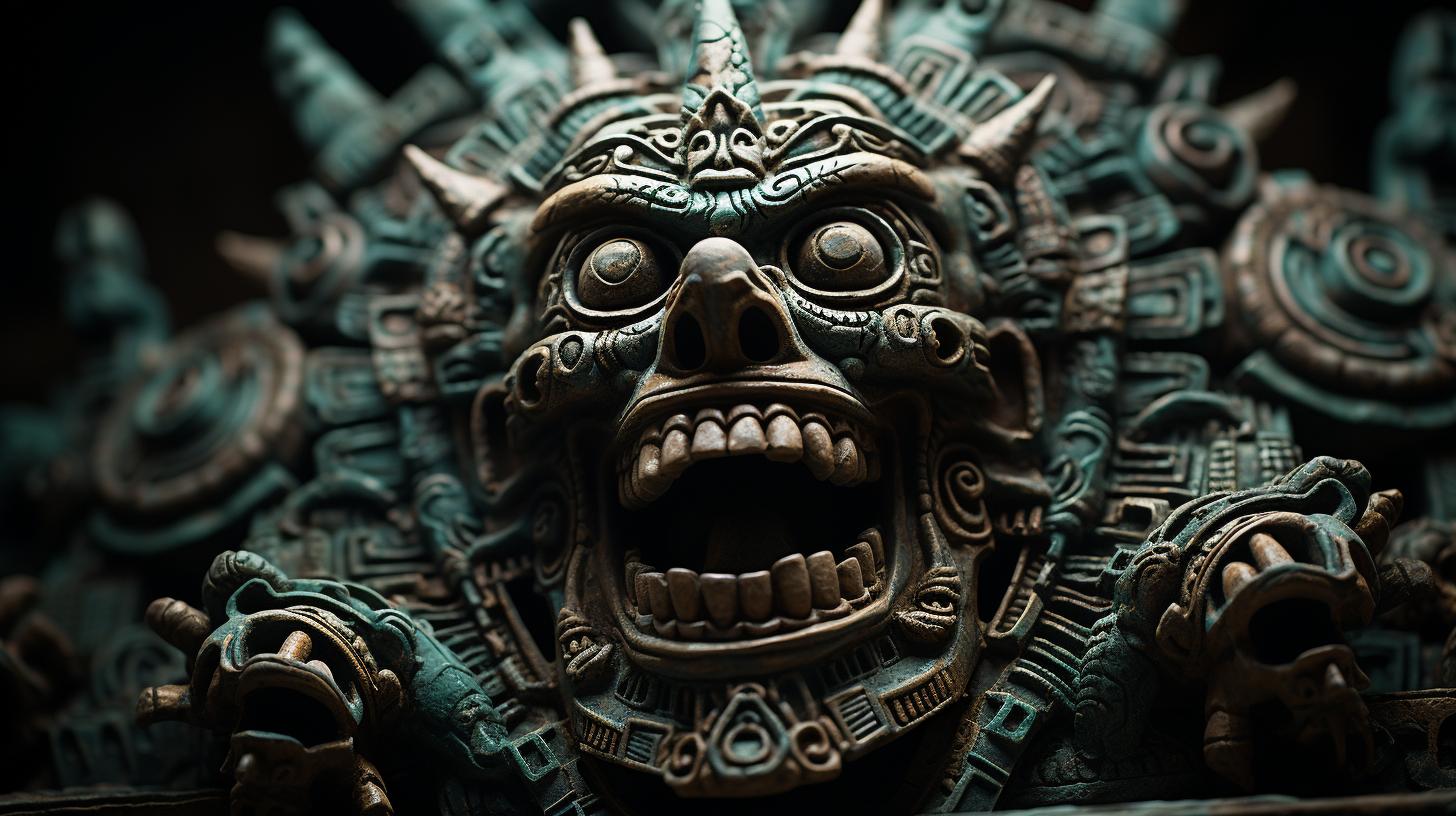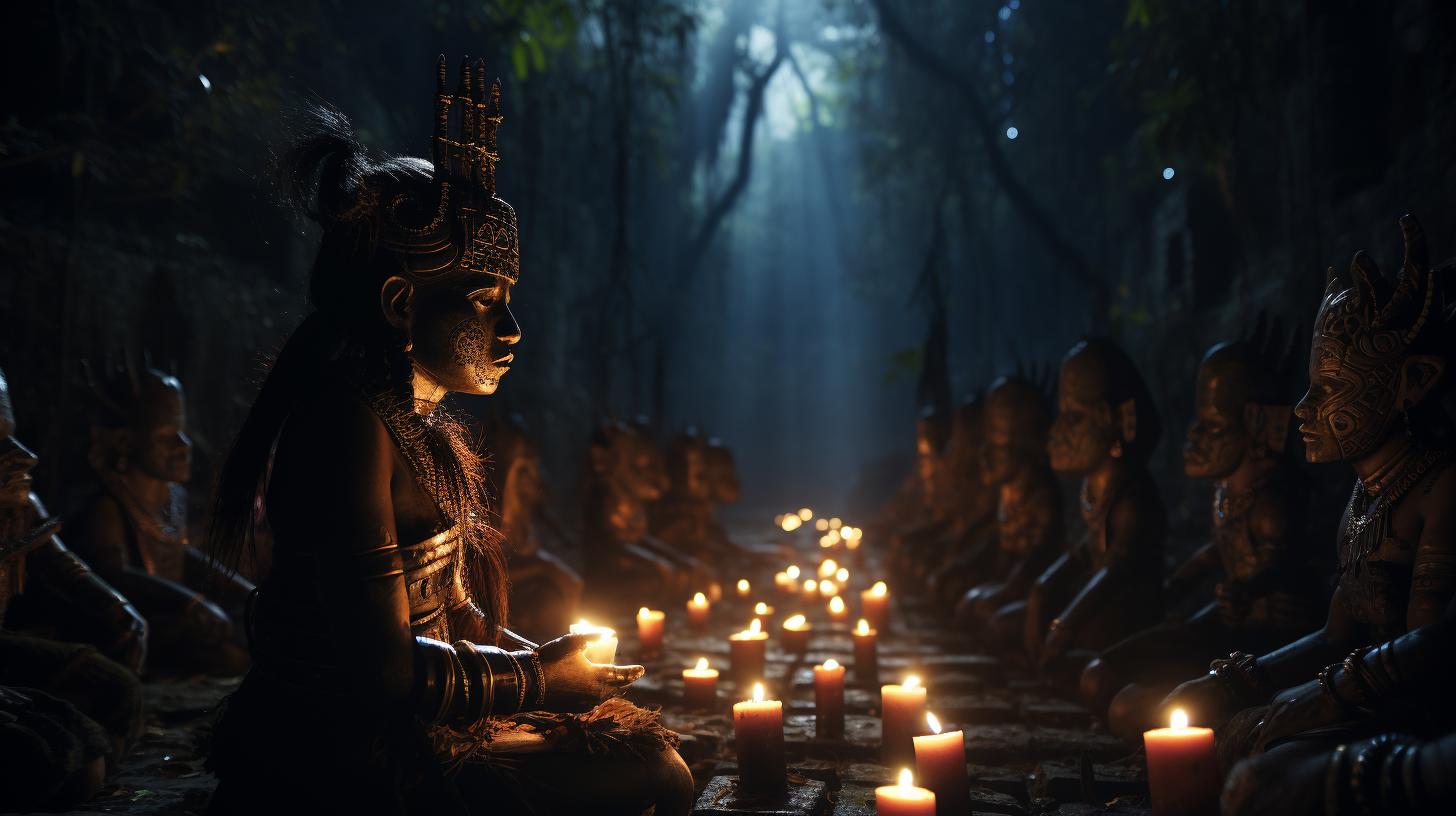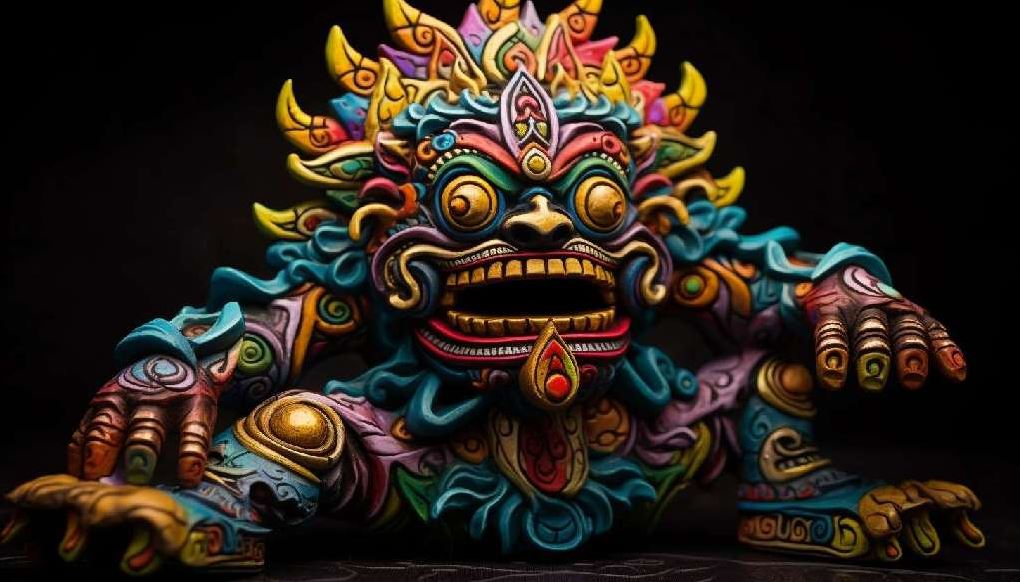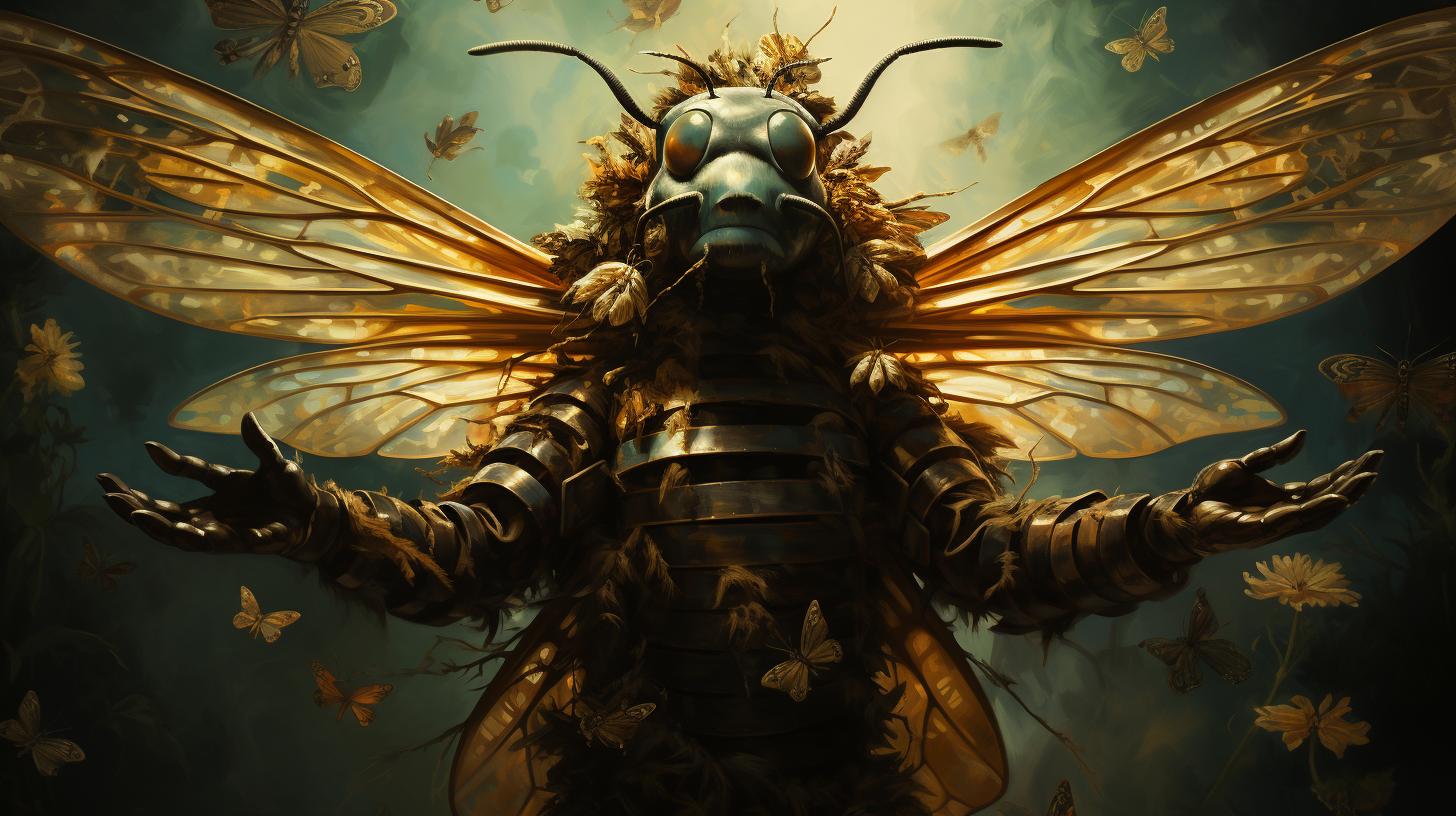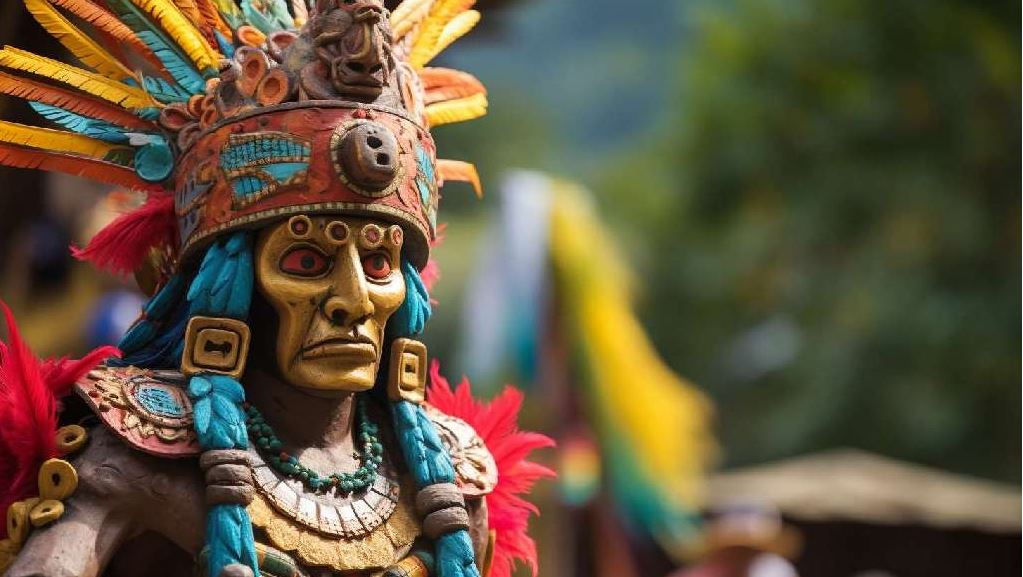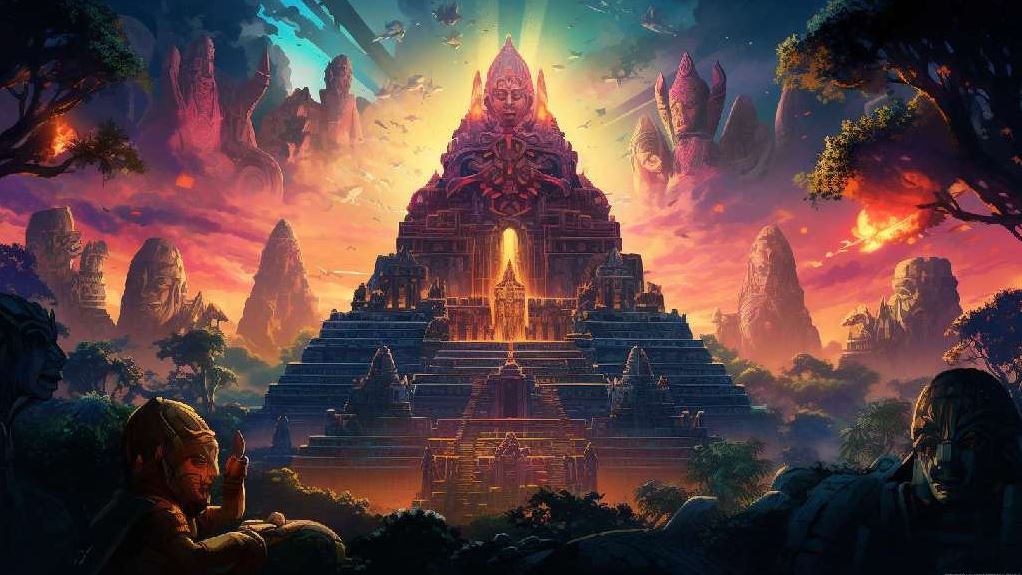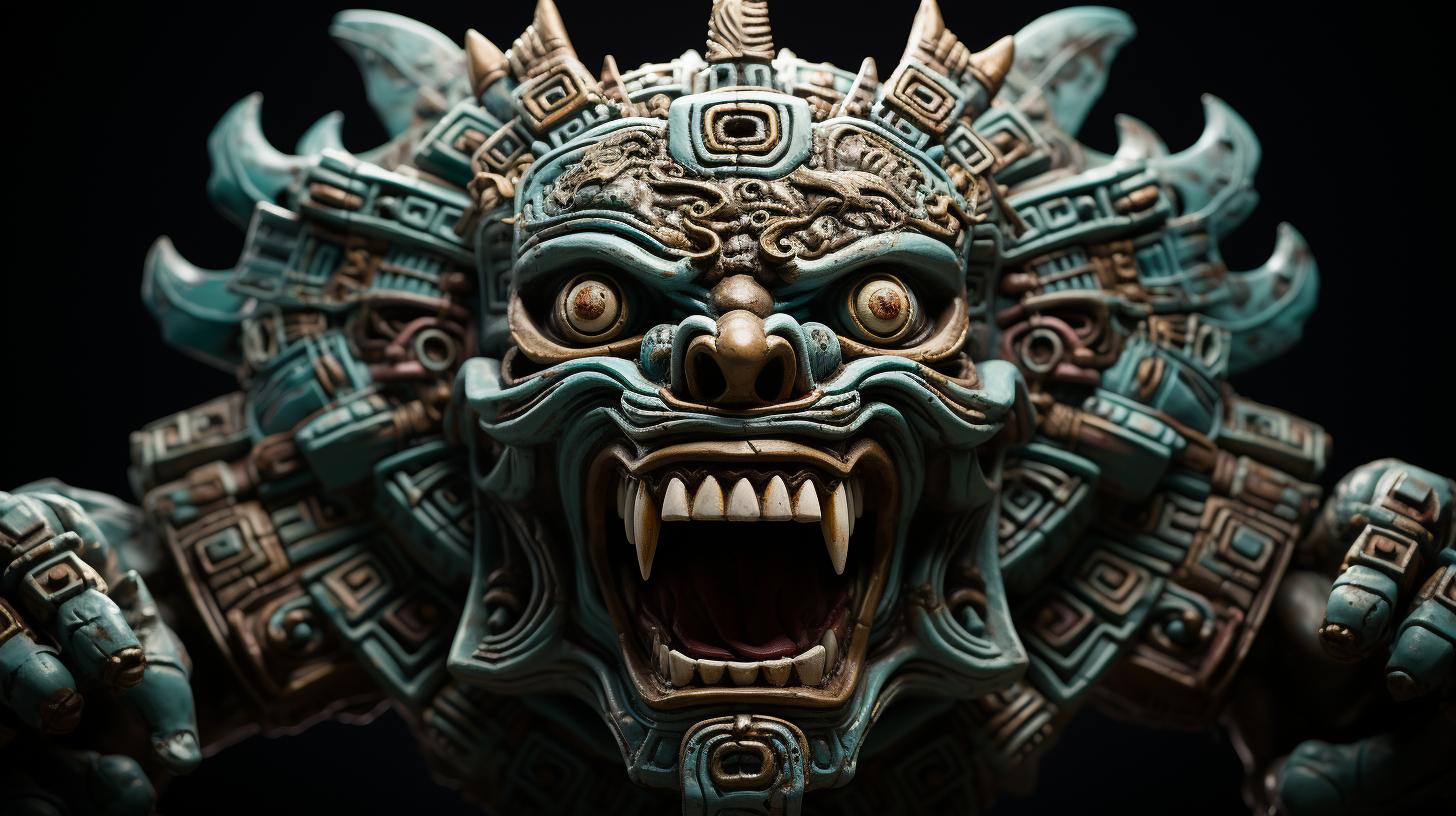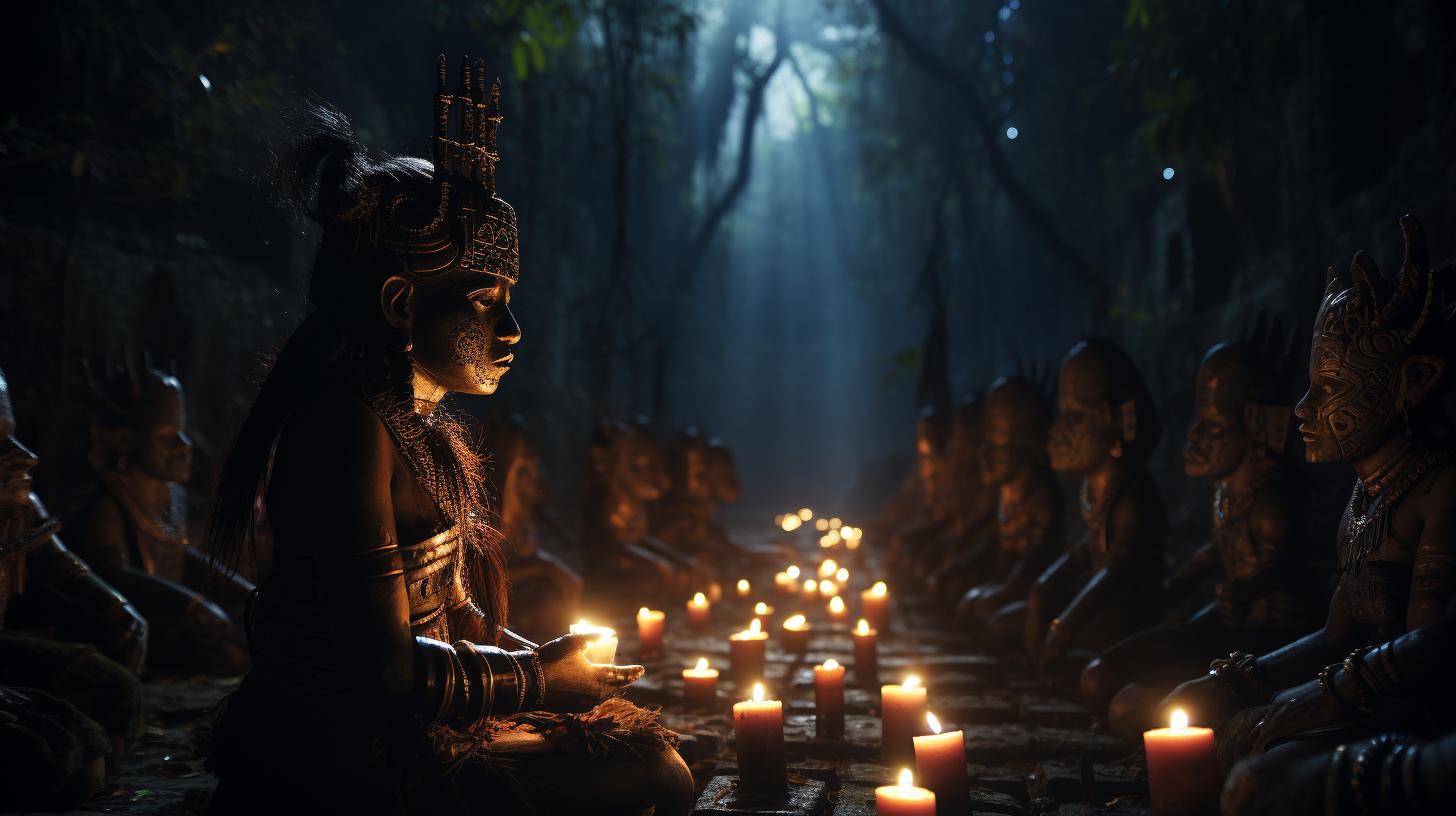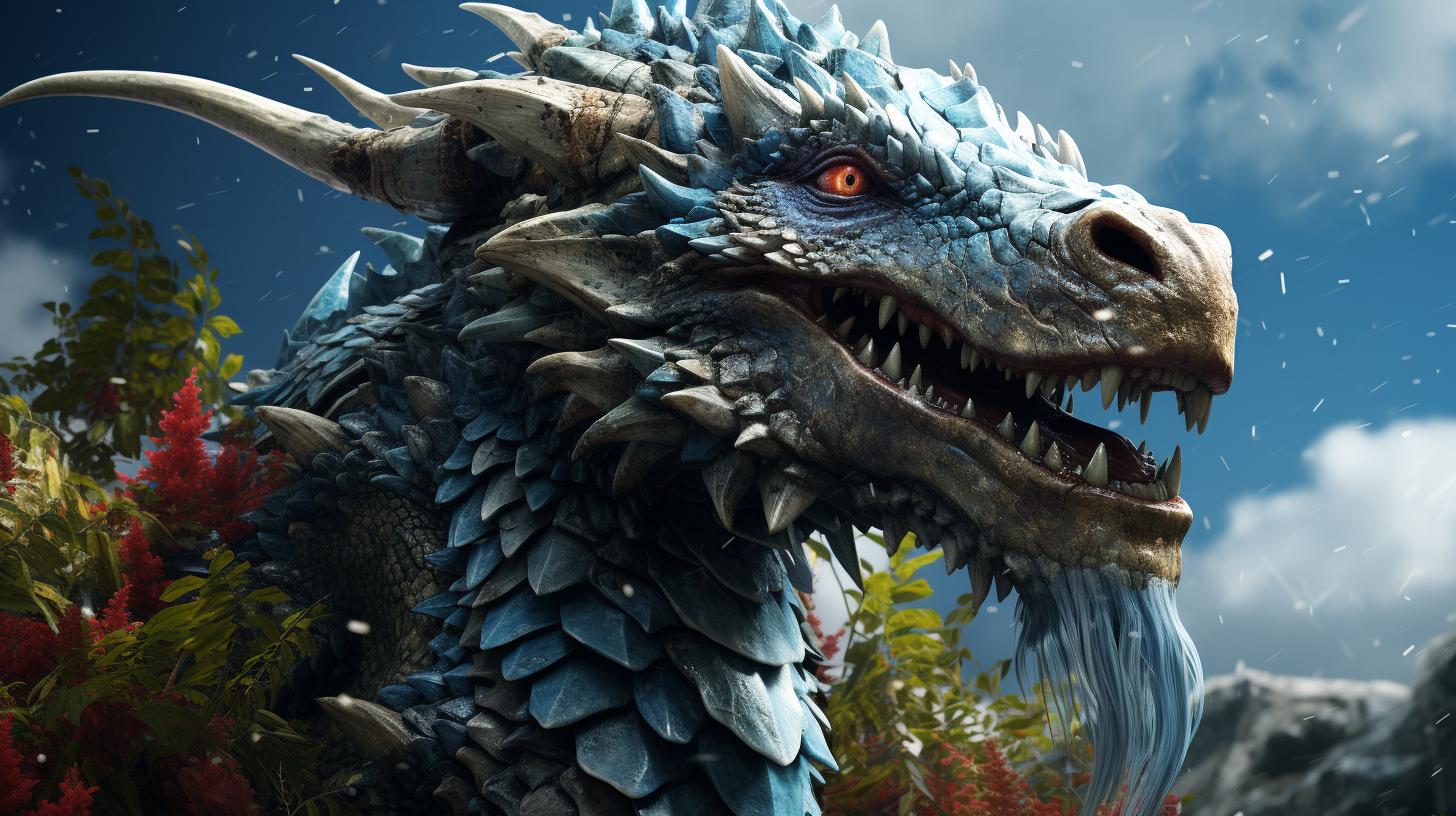Ah Puch: The Terrifying Mayan God of Death Unveiled
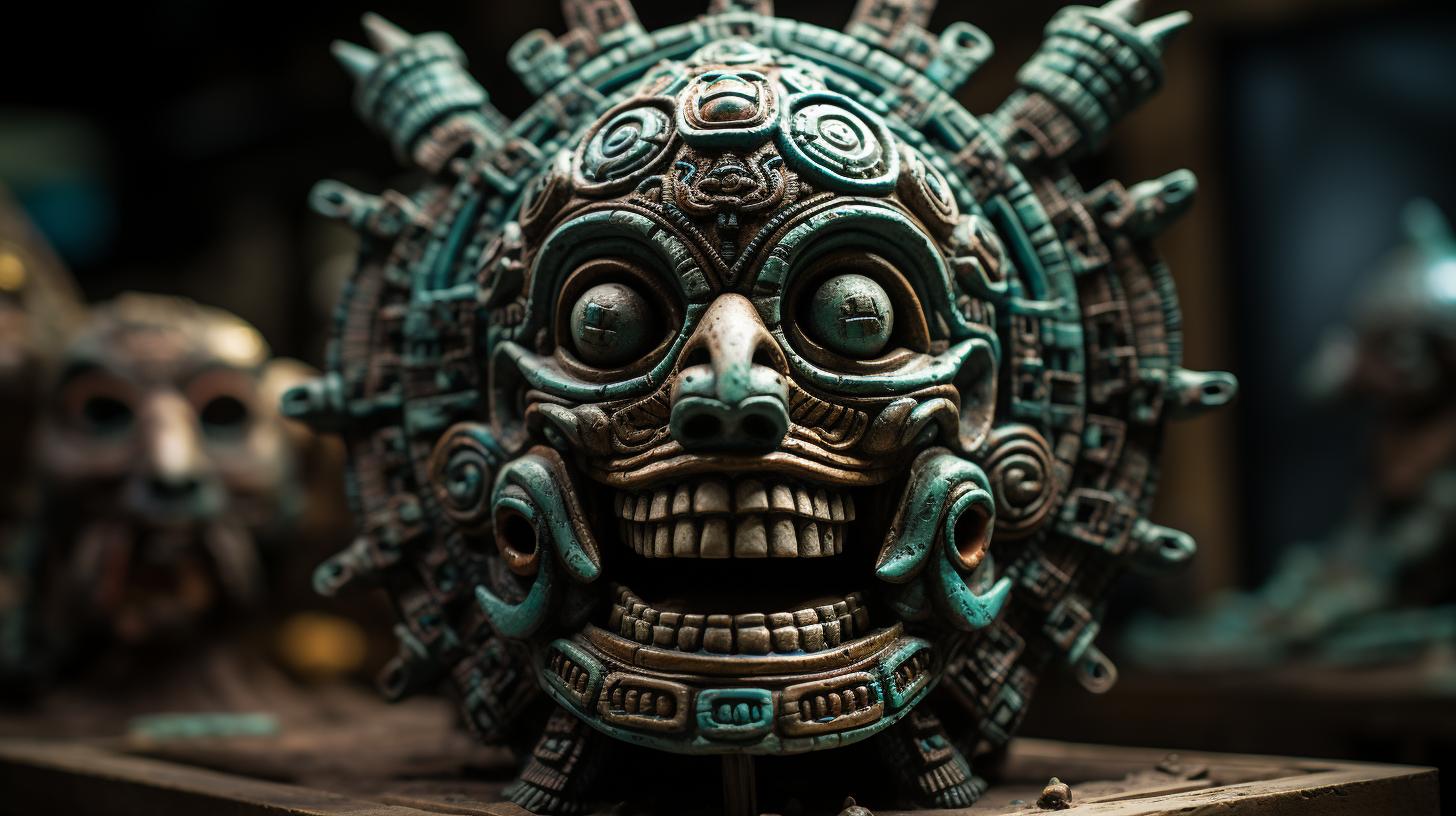
Ah Puch, the Mayan god of death, holds a significant role in Mayan mythology. Known as the ruler of Mitnal, the treacherous Maya underworld, he is depicted with a ghastly appearance, including a decomposing body and a malevolent grin.
His eeriness is further enhanced by his favorite attire: a decaying corpse with an owl’s head, adorned with bell-like eyeballs. This article explores the history, beliefs, and terrifying acts associated with Ah Puch, highlighting his comparison with Mictlantecuhtli, the Aztec Lord of the Dead, and the cultural lessons we can learn from his mythological presence.
Overview of Ah Puch Mayan God
Ah Puch, also known as Ah Cizin, Ah Kisin, Ah Pucu, and various other names, is the deity of death in Mayan mythology. He holds the title of Lord of Death and reigns over Mitnal, the most dangerous department of the Mayan underworld.
Ah Puch is depicted with a horrifying appearance, featuring a decomposing body, a skeletal face, and a malevolent smile.
History of Ah Puch
The history of Ah Puch dates back centuries in Mayan culture. He has been revered as a prominent figure associated with death and the afterlife, embodying the fearsome aspects of mortality and the transition between life and the spiritual realm.
Stories and legends containing Ah Puch have been passed down through generations, solidifying his position as a significant deity in Mayan religious beliefs.
Significance of Ah Puch in Mayan Religion
In Mayan religion, Ah Puch holds immense significance as the ruler of Mitnal and the Lord of Death. He represents the final journey of every individual, overseeing their transition from the mortal realm to the underworld.
Ah Puch’s presence embodies the necessary balance between life and death, teaching the Mayan people about the cyclical nature of existence and the importance of cherishing life.
Beliefs and Facts about Ah Puch
Ah Puch is adorned with various appellations, including “The Flatulent One,” showcasing the repulsive characteristics commonly associated with him. Believed to appear at night, the deity is often depicted wearing a decaying corpse with an owl’s head, accentuating his terrifying presence.
Additionally, Ah Puch carries bells, which are actually eyeballs, further intensifying his macabre image.
The Terrifying Appearance of Ah Puch
Ah Puch, the Mayan god of death, is known for his chilling and bone-chilling appearance. This section delves into the description of Ah Puch’s horrifying image, as well as the symbols and representations associated with him.
Description of Ah Puch’s Horrifying Image
Ah Puch is portrayed as a deity with an unsettling and decomposing form. His appearance strikes fear into the hearts of those who encounter him. His body is depicted as decaying, with exposed bones and a skeletal face.
Adding to his gruesome image, Ah Puch is often depicted with a malevolent grin, further enhancing his terrifying aura. The sight of Ah Puch is enough to send shivers down anyone’s spine, illustrating the power he holds as the god of death in Mayan mythology.
Symbols and Representations of Ah Puch
Ah Puch is symbolized by several elements that represent death and decay. One of the prominent symbols associated with him is the presence of a corpse with an owl’s head, emphasizing his association with night and darkness.
This grim representation highlights Ah Puch’s role as a harbinger of death and the supernatural. Additionally, he is often depicted wearing campanas, which are actually eyeballs transformed into bell-like objects. These bells symbolize his ability to hear the cries of the dying and are a haunting reminder of his presence.
Key points:
- Ah Puch has a horrifying appearance, with a decomposing body and a skeletal face.
- His malevolent grin adds to his terrifying aura.
- Ah Puch is often depicted with a corpse-like figure topped with an owl’s head, symbolizing his association with darkness.
- Campanas, or eyeball bells, are significant symbols representing Ah Puch’s ability to hear the cries of the dying.
Ah Puch’s Role as the God of Death
Within Mayan mythology, Ah Puch holds a dominant position as the god of death.
His domain extends to Mitnal, the menacing underworld in Mayan belief. As the ruler of this treacherous realm, Ah Puch wields immense power over the souls that enter his domain after death.
Ah Puch’s Dominion over Mitnal, the Dangerous Underworld
Mitnal, the realm controlled by Ah Puch, is renowned as the most perilous segment of the Maya underworld. It is a desolate and gloomy place, filled with dangers that await the souls of the deceased.
In Mitnal, Ah Puch asserts his authority as the lord of death, overseeing the torment and suffering inflicted upon the souls trapped within its depths. This desolate and foreboding realm serves as a stark reminder of the consequences one must face in the afterlife.
Acts of Ah Puch and his Lesser Demons
Ah Puch is known to carry out terrifying acts of destruction and punishment. Accompanied by his lesser demons and supernatural entities, he unleashes his ferocity upon any unfortunate souls who cross his path.
The acts of Ah Puch and his minions are ghastly and serve to remind the living of the power and inevitability of death.
These acts of terror include inflicting disease, causing natural disasters, and instigating the demise of individuals through various means. The awe-inspiring wrath of Ah Puch demonstrates his position as a fearsome deity, one that evokes both reverence and dread.
Escaping Ah Puch’s Attention and Superstitions
Despite the chilling presence of Ah Puch, it is believed that there are ways to elude his attention and escape his malevolence. According to Mayan superstitions, one can avoid his gaze and wrath by emitting howls, cries, and mourning sounds, fooling him into thinking that his lesser demons are attending to your sorrows.
Interestingly, there is an old belief that when an owl hoots, it signals an impending death. However, calming superstitions suggest counting to ten during such instances to maintain composure and dispel any fears.
While navigating the treacherous realm of Ah Puch’s influence, it is essential to remain vigilant and cautious, as escaping his grasp requires a delicate balance between understanding his power and relying on the superstitions ingrained in Mayan culture.
Comparisons with Mictlantecuhtli, the Aztec Lord of the Dead
When exploring the mythologies of ancient civilizations, it is fascinating to draw comparisons between deities with similar roles in different cultures. Ah Puch, the Mayan god of death, shares similarities with Mictlantecuhtli, the Aztec Lord of the Dead.
While their origins and intricate mythologies differ, both gods represent the concept of death and hold significant roles in their respective cultures.
Similarities and Differences between Ah Puch and Mictlantecuhtli
Both Ah Puch and Mictlantecuhtli are worshiped as gods of death, ruling over their respective underworlds. They symbolize the finality of life and are believed to govern the souls of the deceased.
However, there are notable differences in their depiction and mythology.
Ah Puch is represented as a decomposing, skeletal figure with a malevolent grin, emphasizing the decay and horror associated with death. On the other hand, Mictlantecuhtli is often portrayed as a skeleton adorned with regal garments, symbolizing the transition and continuation of life beyond death.
Their roles in the afterlife also differ. Ah Puch rules over Mitnal, the dangerous underworld in Mayan mythology, where souls face perilous trials. In contrast, Mictlantecuhtli presides over Mictlan, the Aztec underworld, focusing more on the peaceful rest and renewal of souls rather than trials and punishments.
Role of Ah Puch in Mayan and Aztec Mythology
Ah Puch played a prominent role in Mayan cosmology. Alongside presiding over the realm of death, he was also associated with the letter A in the Mayan alphabet, signifying his significance.
His terrifying appearance and association with decay highlighted the Mayan belief in the inevitable decay of all living things.
In Aztec mythology, Mictlantecuhtli held a crucial role as the ruler of the Aztec underworld, Mictlan. Together with his consort, Mictecacihuatl, they ensured the safe passage of souls into the afterlife.
Their realm was believed to be a final resting place for the deceased, where they would undergo a transformative journey before finding eternal peace.
While both Ah Puch and Mictlantecuhtli were revered as gods of death, their specific roles and mythological contexts reveal the unique perspectives and beliefs of the Mayan and Aztec cultures.
Lessons to Learn from Ah Puch
Understanding Death and the Afterlife in Mayan Culture
In Mayan culture, death was not seen as an end but rather as a transition to the afterlife. Ah Puch, as the god of death, represents this belief and teaches us about the understanding of death in Mayan society.
The Mayans believed in multiple realms within the afterlife, and Ah Puch was the ruler of Mitnal, the most dangerous and treacherous underworld. This concept invites us to reflect on our own perspectives of death and explore the diverse interpretations and rituals surrounding the afterlife.
Cultural and Historical Significance of Ah Puch
The figure of Ah Puch holds great cultural and historical significance in Mayan mythology. Through studying and understanding Ah Puch, we gain valuable insights into the beliefs, values, and customs of the Mayan civilization.
Ah Puch’s representation as a fearsome deity with grotesque features reflects the Mayan view of death and the supernatural. Exploring the cultural context behind Ah Puch allows us to appreciate the rich heritage of the Mayan people and their intricate mythological traditions.
Additionally, Ah Puch’s comparison with Mictlantecuhtli, the Aztec Lord of the Dead, gives us a glimpse into the interconnectedness and diversity of ancient Mesoamerican cultures. By examining the similarities and differences between these deities, we can discern the shared themes and influences that shaped the mythologies of different indigenous peoples.
- Reflecting on the concept of death in Mayan culture
- Exploring the afterlife realms and beliefs in Mayan mythology
- Understanding the cultural context and historical significance of Ah Puch
- Comparing Ah Puch with Mictlantecuhtli for a deeper understanding of Mesoamerican mythologies
Studying the lessons derived from Ah Puch can broaden our perspectives on death, foster appreciation for ancient civilizations, and ignite curiosity in cross-cultural comparisons.
By delving into the meanings and symbolism associated with Ah Puch in Maya society, we gain a deeper understanding of the complexities, fears, and beliefs that shaped the worldview of the ancient Maya.
…

